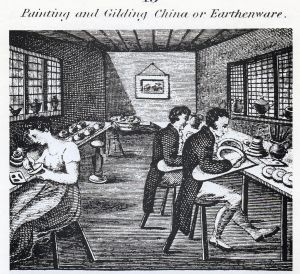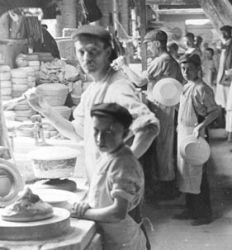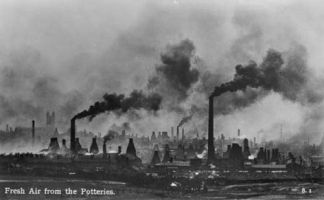- History
- Pottery
- Industry
And More on Working Conditions at Spode
Painters Work Rooms William Ferington aged 43 had charge of the boy's painting room, where he oversaw nineteen apprentices, aged twelve to nineteen. Ferrington reported that the majority could read and write and that he gave them instructions in accounting. They were paid two shillings a week the first year rising six pence per week each year until the fifth year, after which they were paid by the piece. Eliza Beech, aged 28 was in charge of the girls' painting roomwhere there were seventeen apprentices all aged over thirteen. They received one shilling a week in their first year rising six pence a week each year until the fifth year after which they were paid by the piece. She thought the children working in her department "superior ... they are respectful, clean, and well conducted." |
| Charles Sanders, aged 13, had worked at the factory since the age of ten, and worked in the scouring room alongside three other boys. He reported that he nearly lost a hand cleaning the machinery that ran an engine-driven throwing wheel while it was still working. Industrial accidents occurred with enough frequency that many of the workers mentioned them in their interviews. No one was immune. Josiah Spode III lost an arm after it was trapped in the cogs of an engine. Besides industrial injuries, there were industrial diseases. The dust in the scouring room from cleaning the wares after the first firing was a major cause of silicosis or Potters Rot.
|
In his concluding note Samuel Scriven wrote, “These works are very extensive, the whole covering nearly fourteen acres of ground; they appear to have been erected many years, as there is neither conformity, order, or system of arrangement … except in the dipping house, green house, and one or two others, which are comparatively modern structures. The printing rooms, throwing rooms, pressing rooms, and painting rooms, in which numbers are working together, are close, low, small, and inconvenient places for the purposes to which they are applied – even at this season ... they are hot and unhealthy… The premises are well drained, and great order and regularity is observed by the work-people. The boys and girls are in separate premises, and are under good discipline.” |
|





